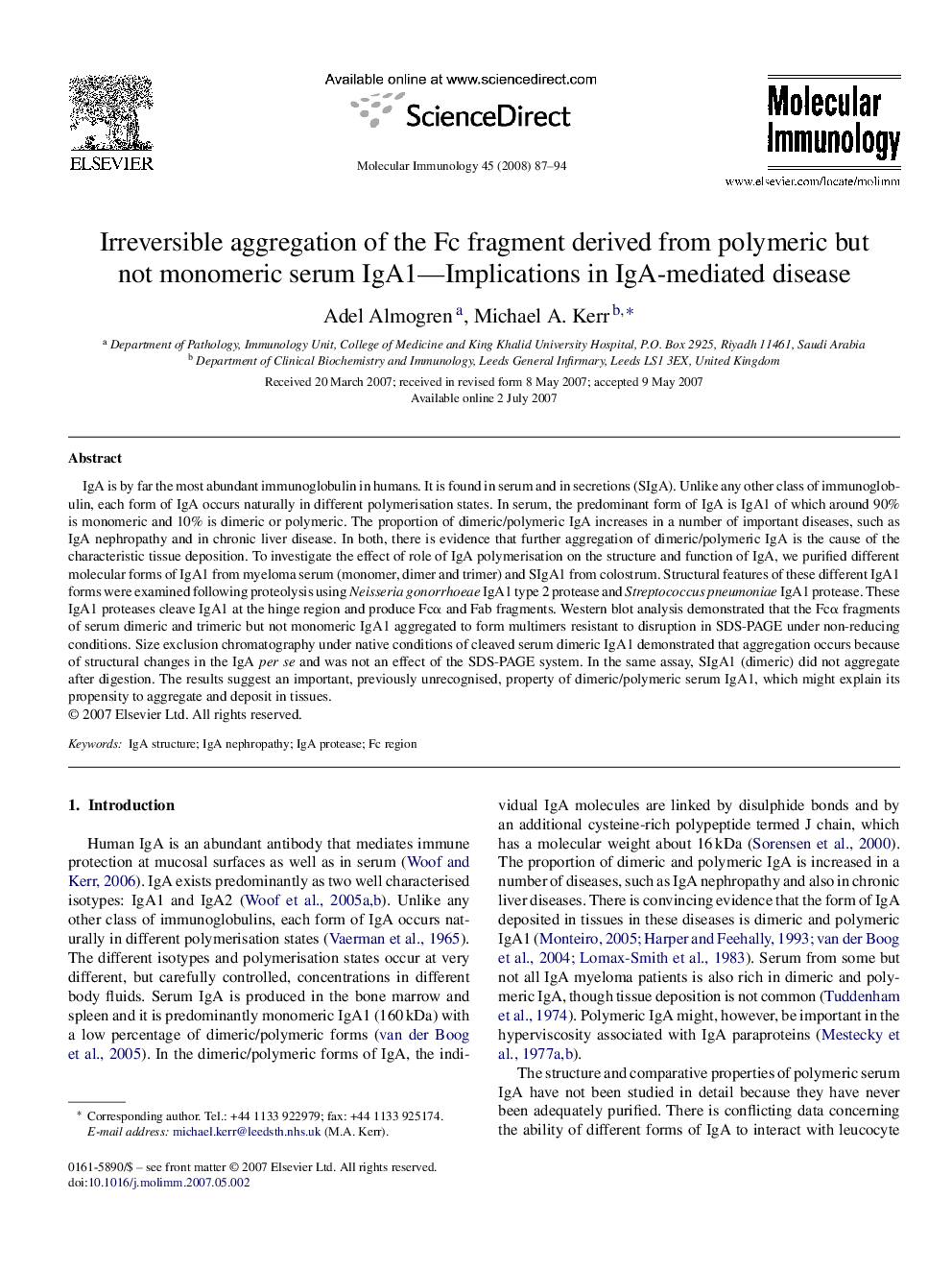| کد مقاله | کد نشریه | سال انتشار | مقاله انگلیسی | نسخه تمام متن |
|---|---|---|---|---|
| 5918316 | 1163858 | 2008 | 8 صفحه PDF | دانلود رایگان |
عنوان انگلیسی مقاله ISI
Irreversible aggregation of the Fc fragment derived from polymeric but not monomeric serum IgA1-Implications in IgA-mediated disease
دانلود مقاله + سفارش ترجمه
دانلود مقاله ISI انگلیسی
رایگان برای ایرانیان
موضوعات مرتبط
علوم زیستی و بیوفناوری
بیوشیمی، ژنتیک و زیست شناسی مولکولی
زیست شناسی مولکولی
پیش نمایش صفحه اول مقاله

چکیده انگلیسی
IgA is by far the most abundant immunoglobulin in humans. It is found in serum and in secretions (SIgA). Unlike any other class of immunoglobulin, each form of IgA occurs naturally in different polymerisation states. In serum, the predominant form of IgA is IgA1 of which around 90% is monomeric and 10% is dimeric or polymeric. The proportion of dimeric/polymeric IgA increases in a number of important diseases, such as IgA nephropathy and in chronic liver disease. In both, there is evidence that further aggregation of dimeric/polymeric IgA is the cause of the characteristic tissue deposition. To investigate the effect of role of IgA polymerisation on the structure and function of IgA, we purified different molecular forms of IgA1 from myeloma serum (monomer, dimer and trimer) and SIgA1 from colostrum. Structural features of these different IgA1 forms were examined following proteolysis using Neisseria gonorrhoeae IgA1 type 2 protease and Streptococcus pneumoniae IgA1 protease. These IgA1 proteases cleave IgA1 at the hinge region and produce Fcα and Fab fragments. Western blot analysis demonstrated that the Fcα fragments of serum dimeric and trimeric but not monomeric IgA1 aggregated to form multimers resistant to disruption in SDS-PAGE under non-reducing conditions. Size exclusion chromatography under native conditions of cleaved serum dimeric IgA1 demonstrated that aggregation occurs because of structural changes in the IgA per se and was not an effect of the SDS-PAGE system. In the same assay, SIgA1 (dimeric) did not aggregate after digestion. The results suggest an important, previously unrecognised, property of dimeric/polymeric serum IgA1, which might explain its propensity to aggregate and deposit in tissues.
ناشر
Database: Elsevier - ScienceDirect (ساینس دایرکت)
Journal: Molecular Immunology - Volume 45, Issue 1, January 2008, Pages 87-94
Journal: Molecular Immunology - Volume 45, Issue 1, January 2008, Pages 87-94
نویسندگان
Adel Almogren, Michael A. Kerr,